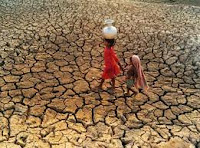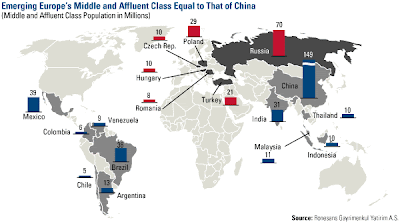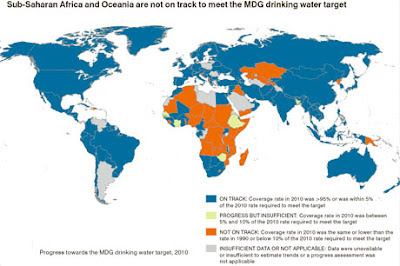Solar power, like every other fossil and renewable source of electric power (other than wind-generated power) is dependent upon adequate supplies of fresh water. The amount of water required varies with the type of process used to convert sunlight into electricity.
2 Major Types of Solar Generators
Photo-voltaic (PV) and Solar Thermal are the two predominant technologies for converting sunlight into electric power.
Solar Thermal requires orders of magnitude more fresh water supplies than does photo-voltaic power generation. For example,a proposed Solar Thermal Power Plant to be located in Amargosa Valley, Nevada, required 1.3 billion gallons of water per year. This volume represents 20 percent of the Valley's available ground water supply - water that the desert Valley badly needs for other uses. This water usage level is of the order of use required by a coal-fired plant.
Photovoltaic power generation, on the other hand has a very minimal water requirement once it is installed and running. But its power generation capability is also limited to that of a single home or two.
Sustainability
Depending upon definition, when water use is a criteria, some renewable energy sources begin to look unsustainable.
Even shale gas, will be deemed unsustainable when its water use is a criteria
Sustainable Electric Power Generation
Wind power is the only electricity generating option that has virtually no dependency on freshwater.
2 Major Types of Solar Generators
 |
| PV-based Solar Panel Power Generation Source - europlas.co.uk |
 |
| Solar Thermal Power Generation Source - treehugger.com |
Solar Thermal requires orders of magnitude more fresh water supplies than does photo-voltaic power generation. For example,a proposed Solar Thermal Power Plant to be located in Amargosa Valley, Nevada, required 1.3 billion gallons of water per year. This volume represents 20 percent of the Valley's available ground water supply - water that the desert Valley badly needs for other uses. This water usage level is of the order of use required by a coal-fired plant.
Photovoltaic power generation, on the other hand has a very minimal water requirement once it is installed and running. But its power generation capability is also limited to that of a single home or two.
Sustainability
 |
| Shale gas extraction Source - news.consumerreports.org |
Even shale gas, will be deemed unsustainable when its water use is a criteria
Sustainable Electric Power Generation
 |
| Wind Power Source - treehugger.com |












































